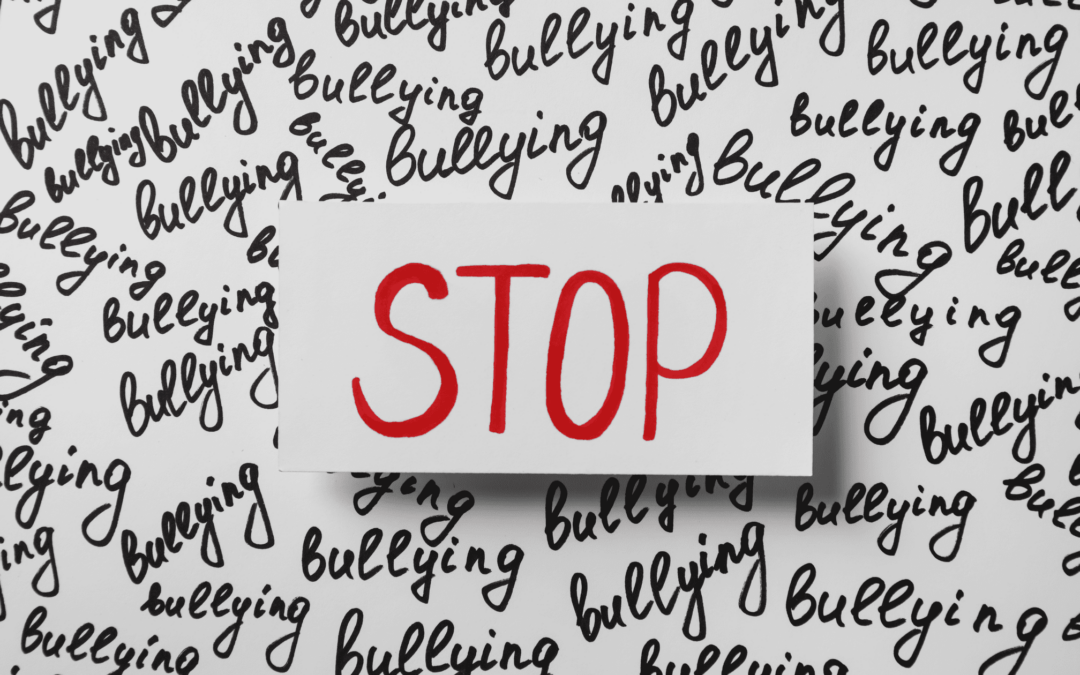A guest blog by Hailey Kanipe
The back-to-school season is a time of excitement and new beginnings for many students. However, it can also bring anxiety and fear for those who face bullying. As children return to the classroom, adults need to be aware of the signs of bullying. Recognizing these signs can significantly impact a child’s school experience and overall well-being. Here’s a guide to help you notice the signs of bullying and support the youth in your life during the upcoming back-to-school period.
Signs of Bullying
Returning to school can trigger emotional and behavioral changes in children who are being bullied. Be on the lookout for…
- Increased Anxiety or Depression
If a child seems more anxious, sad, or withdrawn than usual, especially as the school year starts, it could be a sign they are experiencing bullying. Look for changes in appetite, sleep disturbances, or a lack of interest in activities they once enjoyed. - Sudden Changes in Mood
Mood swings, irritability, or unexplained outbursts can indicate something is wrong. The stress of returning to a potentially hostile school environment can cause these emotional shifts. - Reluctance to Go to School
Pay attention if a child frequently complains of feeling sick, has headaches, or makes other excuses to avoid school. This reluctance can be a direct response to bullying.
Physical indicators can provide important clues about bullying.
- Unexplained Injuries
Look for bruises, cuts, or other injuries a child may be reluctant to explain. Frequent or severe injuries without a plausible explanation can be a red flag, especially when they coincide with the start of the school year. - Damaged or Missing Personal Items
If a child’s belongings are frequently lost, damaged, or stolen, it could be a sign that they are being bullied. Pay attention to torn clothing, missing books, or broken electronics.
The social dynamics of a new school year can impact a child’s experience.
- Sudden Change in Friendships
If a child suddenly loses friends or is excluded from group activities, it might indicate they are being targeted by bullies. They may also become more isolated and spend more time alone. - Avoidance of Social Media
In today’s digital age, cyberbullying is a significant concern. If a child suddenly stops using social media or seems distressed after using it, they may be experiencing online harassment.
Bullying can also affect a child’s performance in school.
- Decline in Grades
A noticeable drop in academic performance can signify bullying. The stress and anxiety associated with being bullied can make it difficult for children to concentrate on their studies, especially as they transition back to school. - Frequent Absences
As mentioned earlier, children might avoid school to escape bullying. This can result in increased absences, tardiness, or frequent trips to the school nurse.
Offering Support
If you suspect a child is being bullied as they return to school, below are steps you can take.
- Create a Safe Space for Conversation
Encourage open communication by creating a safe, non-judgmental space where the child feels comfortable sharing their experiences. Listen actively and empathetically. - Validate Their Feelings
Let the child know that feeling upset, scared, or angry is okay. Validate their emotions and assure them that they are not alone. - Document the Bullying
Record incidents, including dates, times, and descriptions. This documentation can be helpful if you need to involve school authorities or other organizations. - Work with the School
Reach out to teachers, counselors, and administrators to develop a plan to address the bullying. Schools often have policies and resources to handle such situations, especially at the beginning of the school year. - Encourage Positive Activities
Encourage participation in activities the child enjoys to help build self-esteem and resilience. Positive experiences and supportive relationships can buffer against the negative effects of bullying.
Additional Resources:
- https://www.stopbullying.gov/resources/get-help-now
- https://www.apa.org/topics/bullying
- https://uscenterforsafesport.org/wp-content/uploads/2023/03/BullyingHandbook_2023Update_100423-A_v1.9.pdf
- https://cybersmileeducation.org/urbandecay/
- https://www.stompoutbullying.org/
- https://childmind.org/article/what-to-do-if-your-child-is-bullying/

